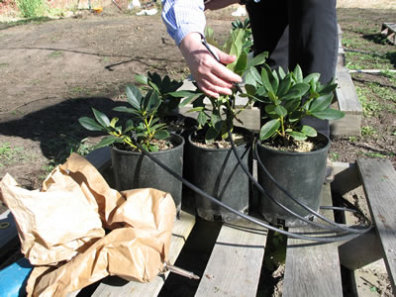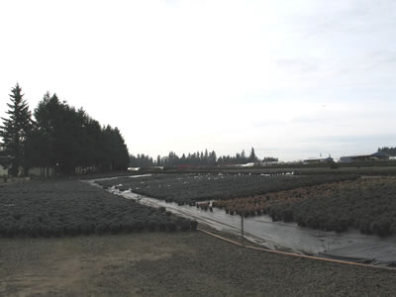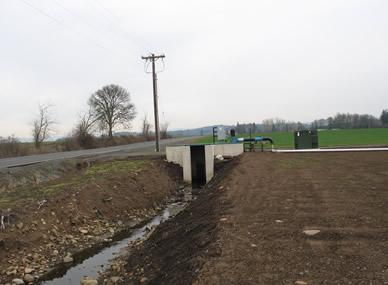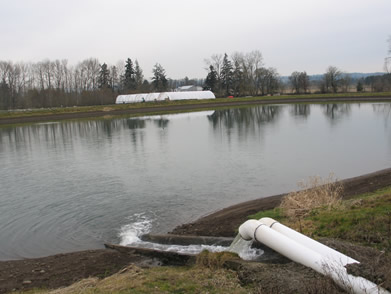WSU Puyallup
Ornamental Plant Pathology
Questions to determine the likelihood of P. ramorum infection
gary.maguireQuestions to determine the need to submit a homeowner sample in Washington State
1) The plant displays leaf blight, defoliation, or stem die back symptoms similar to those shown in the photographs.
a. Yes- go to 2
b. No- Sample can be discarded
2) What plant is affected?
a. The plant is a camellia, rhododendron, pieris, kalmia, viburnum, or lilac purchased since 2002- Submit sample
b. The plant is growing next to a camellia, rhododendron, pieris, kalmia, viburnum, or lilac purchased since 2002- go to 3
c. None of the above- unlikely P. ramorum. Sample can be discarded.
3) Is the plant a known host of Phytophthora ramorum?
a. Yes- Submit sample
b. Sample can be discarded
Contact: Gary Chastagner, 253-445-4528 | WSU Puyallup Research & Extension Center, 2606 West Pioneer, Puyallup, WA, 98371-4998 USA
Last updated January 2, 2013
Plants photo gallery
gary.maguirePlants photo gallery
| Confirm that nursery stock is purchased from a licensed, certified shipping nursery or that material is propagated on-site. | |
| Inspect all incoming nursery stock (buy-ins, transfers, and returns) prior to introduction into the nursery facility. Avoid mixing incoming plants with existing stock until plants have been examined for disease symptoms by trained personnel. | 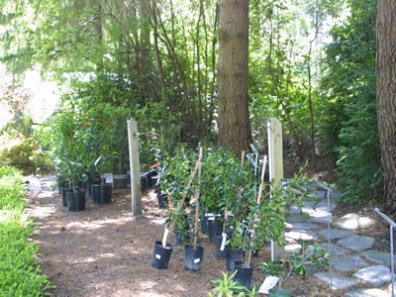 |
| For buy-ins of high risk plants, suspend the use of Phytophthora specific fungicides on 10% or 100 plants, whichever is smaller, for a 2 month period. This will show if fungicides used by the seller were suppressing symptoms prior to purchase.High risk plants for P. ramorum include rhododendron, camellia, pieris, kalmia, and viburnum. | 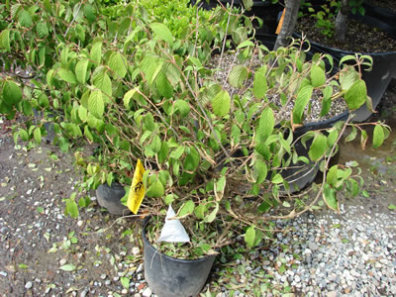 |
| Arrange plants to minimize damage caused by P. ramorum should it enter the nursery.Avoid mixing high-risk genera (Rhododendron, Camellia, and Viburnum) with other host and non-host plants. It is recommended to keep a 2 meter break between high risk plants and other material. | 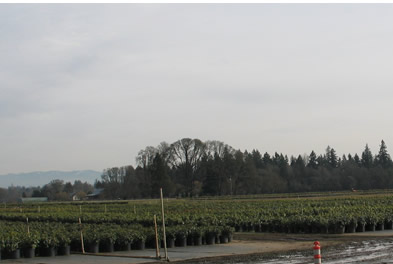 |
| Manage weeds on the nursery site as they could serve as alternate hosts for diseases or be potential reservoirs for disease organisms. | 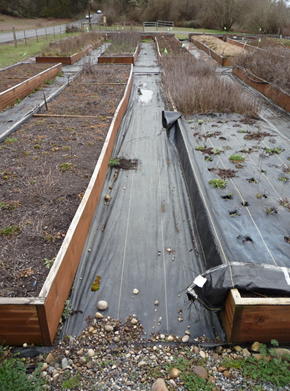 |
| Back to Managing Phytophthora diseases in the nursery | |
Water management photos
gary.maguireWater management photo gallery
| Phytophthora can spread from cull piles where diseased plants are disposed of, especially if the site is muddy with standing water. Spores can be tracked throughout the nursery on vehicle tires and workers shoes.Ensure that runoff from cull piles is directed away from areas such as roads, growing beds, soil components and mixing areas, and especially from areas containing high-risk host plants to prevent contamination by spores. | 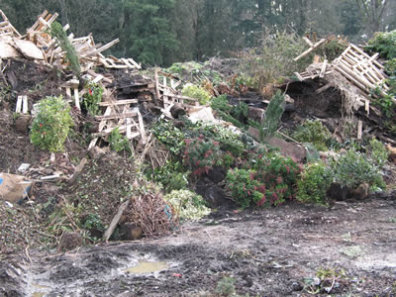 |
| Avoid overhead irrigation. If you use overhead irrigation, ensure that leaf wetness of 12 hr or more is minimized. Irrigate in the morning to allow leaves to dry as soon as possible. | 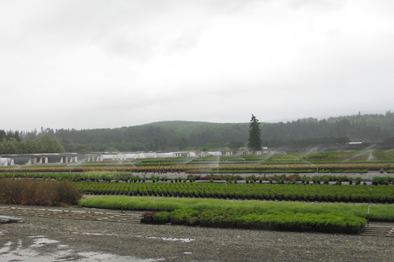 |
| Drip irrigation saves water and reduces the chances of infection. However, if the soil or media stays wet and in contact with the plant, infection may result. | |
| Dirt roads are prone to flooding in the wet climate of the Pacific Northwest.Standing water in roadways is a good environment for Phytophthora and Pythium, whose spores can be spread on vehicle tires. | 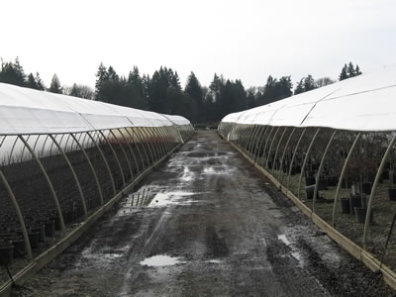 |
| To prevent flooded areas where waterborne diseases can accumulate, a level, graveled road is the best option. | 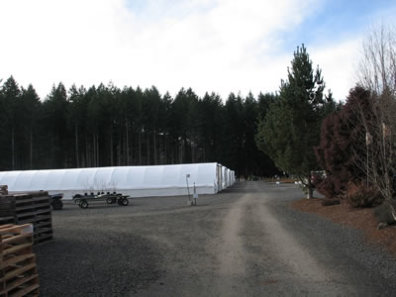 |
| Avoid letting water accumulate under or around blocks of containerized nursery stock. Allowing plants to stand in water increases the chances for Phytophthora root infection. | 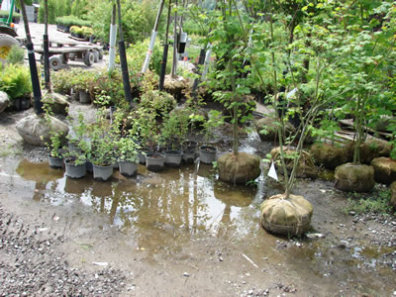 |
| These plants are set out on a sloped area, allowing water to run off rather than accumulate.However, water should be diverted from hillsides populated with P. ramorum host plants since spores move in water. Place these plants at the bottom rather than the top of the slope. | |
| Disease can be spread throughout a nursery in recycled irrigation water.Irrigation water from any source other than well or municipal water should be monitored for P. ramorum if the pathogen is detected in or near the nursery grounds. | |
| Retention ponds should be tested periodically for presence of Phytophthora and Pythium species. It is a good idea to monitor for Phytophthora species in general to reduce damage caused by these diseases. | |
| Water in ponds can be treated with chemicals, such as sodium hypochlorite, to eliminate disease organisms. | 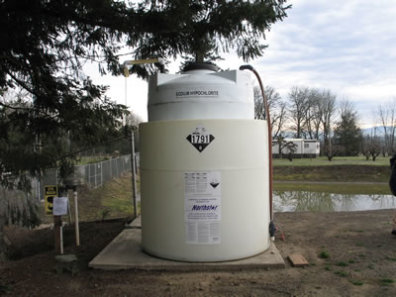 |
| Back to Managing Phytophthora diseases in the nursery |
Containers
gary.maguireContainers
Disease can be transmitted in a nursery via used containers, which may harbor spores in potting media and plant debris. It is important to use clean containers for high risk host material, such as Rhododendron, Camellia, and Viburnum, to prevent infection of new plants.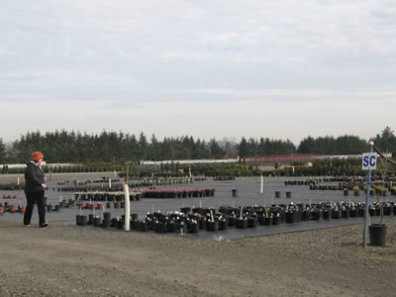
- Recycle old containers and use new ones
-
“Plastic Nursery Pots – Greening Up The Darkest Side of Gardening” by Joe Lamp’l. Joe Gardener, May 2018.
- “Pick your pot” Find out if container alternatives are right for your growing operation. Nursery Management March 2015
-
- Steam sterilization
- “Hotter than ever” by Chris Guntermann. Digger Feb. 2009.
- “Steam treating for weed control” by Whitney Rideout. American Nurseryman April 2012.
- “Using a Steamroom to Sterilize Pallets of Styroblock™ Seedling Containers” by Andy Trent, Robert L. James,Clarke Fleege, and Gary Hileman. In: Riley, L. E.; Dumroese, R. K.; Landis, T. D., tech. coords. 2007. National proceedings: Forest and Conservation Nursery Associations—2006. Proc. RMRS-P-50. Fort Collins, CO: U.S. Department of Agriculture, Forest Service, Rocky Mountain Research Station. Online: http://www.rngr.net/nurseries/publications/proceedings
- Chemical sanitation – USDA approved methods
- Photos – Some ideas for container sanitation methods.
- Let us know if you have other ideas.


